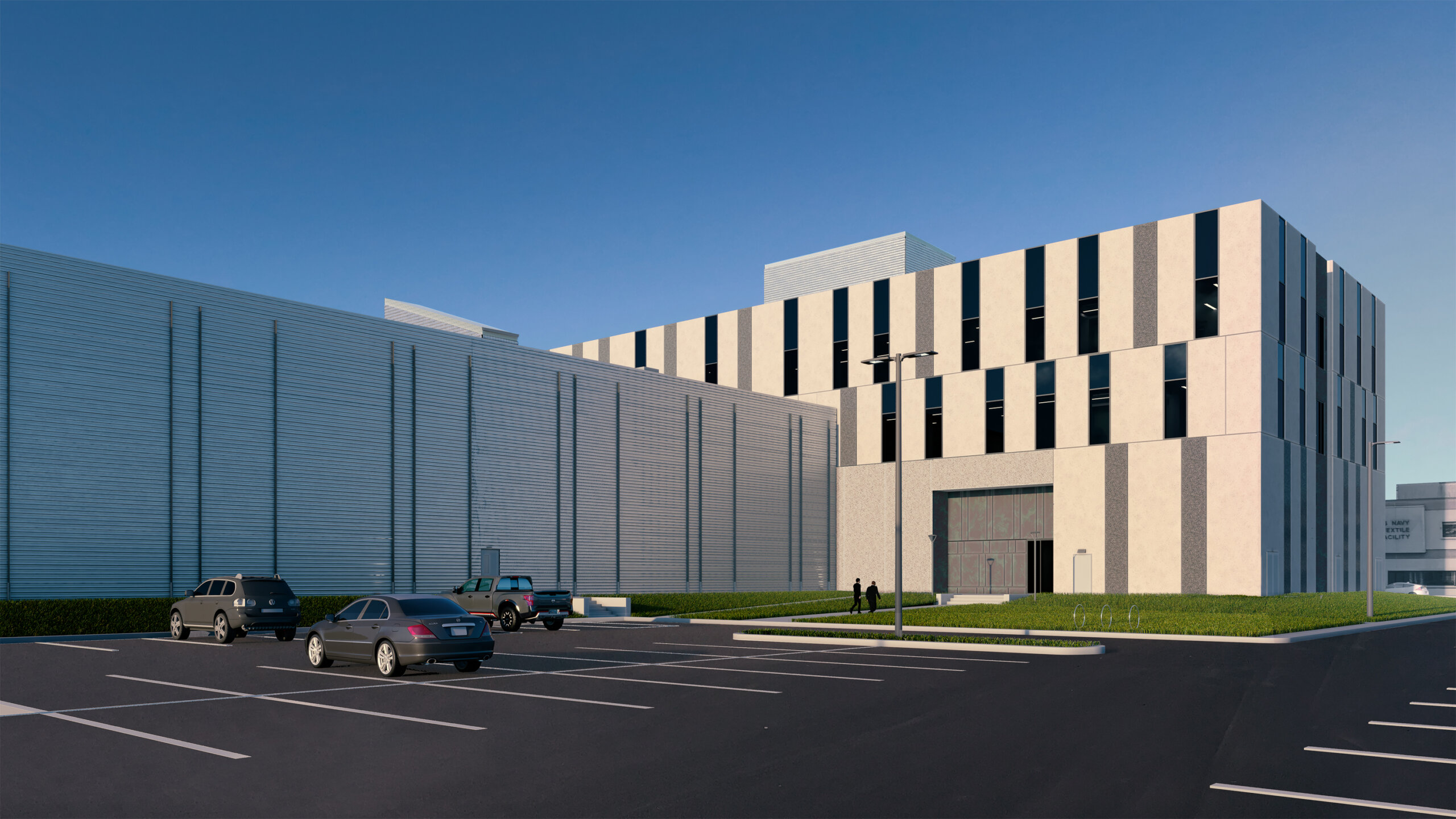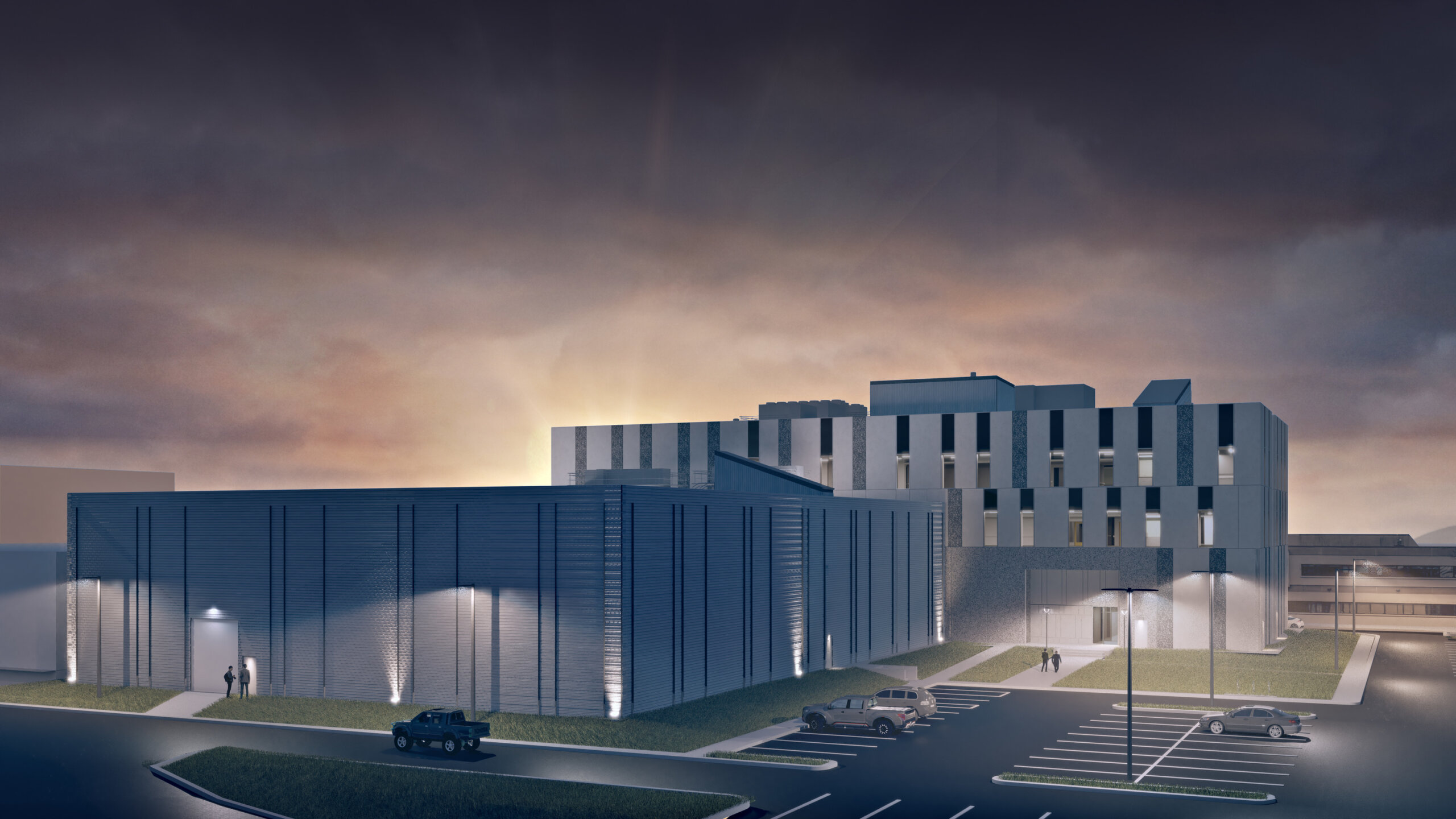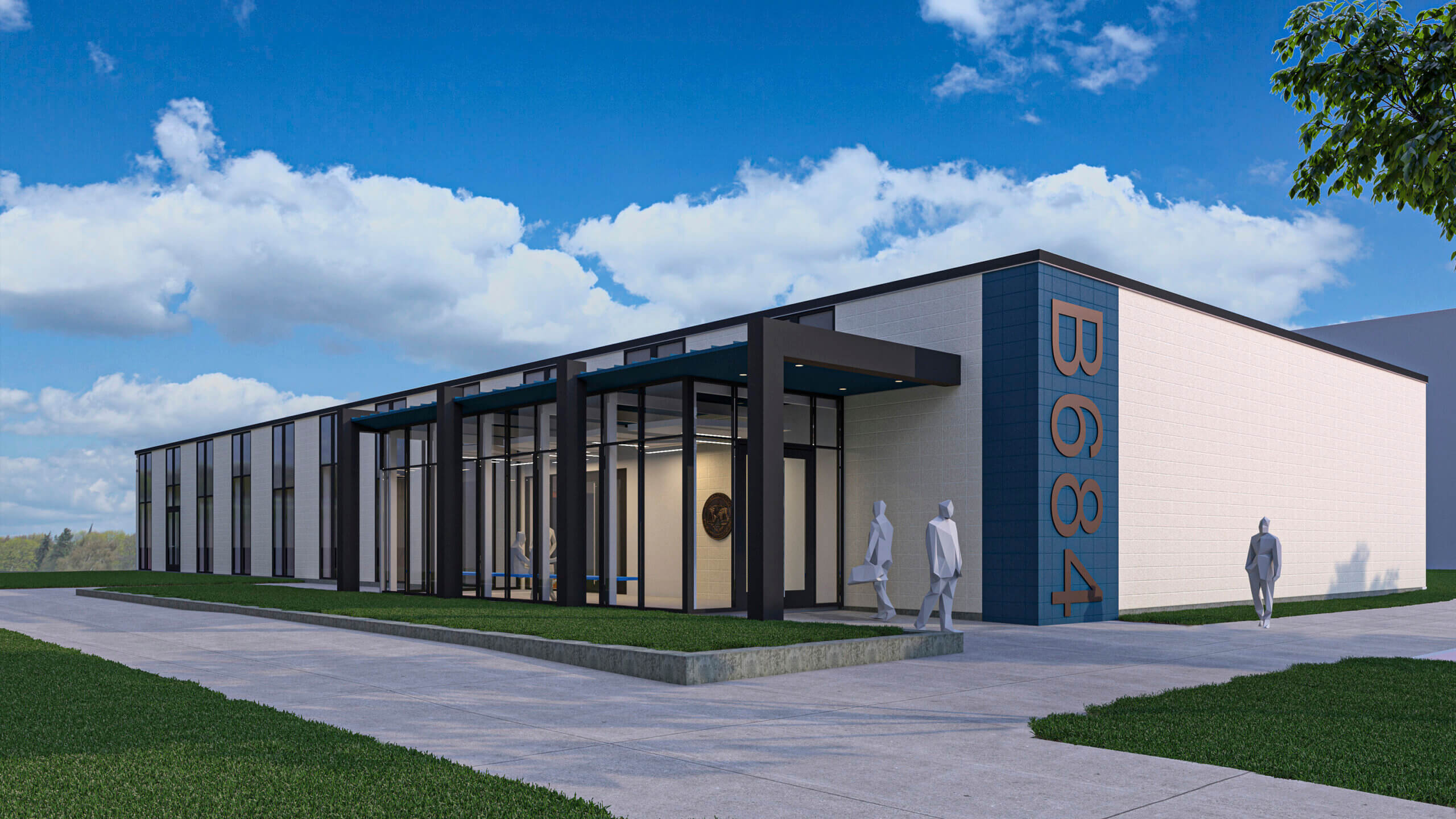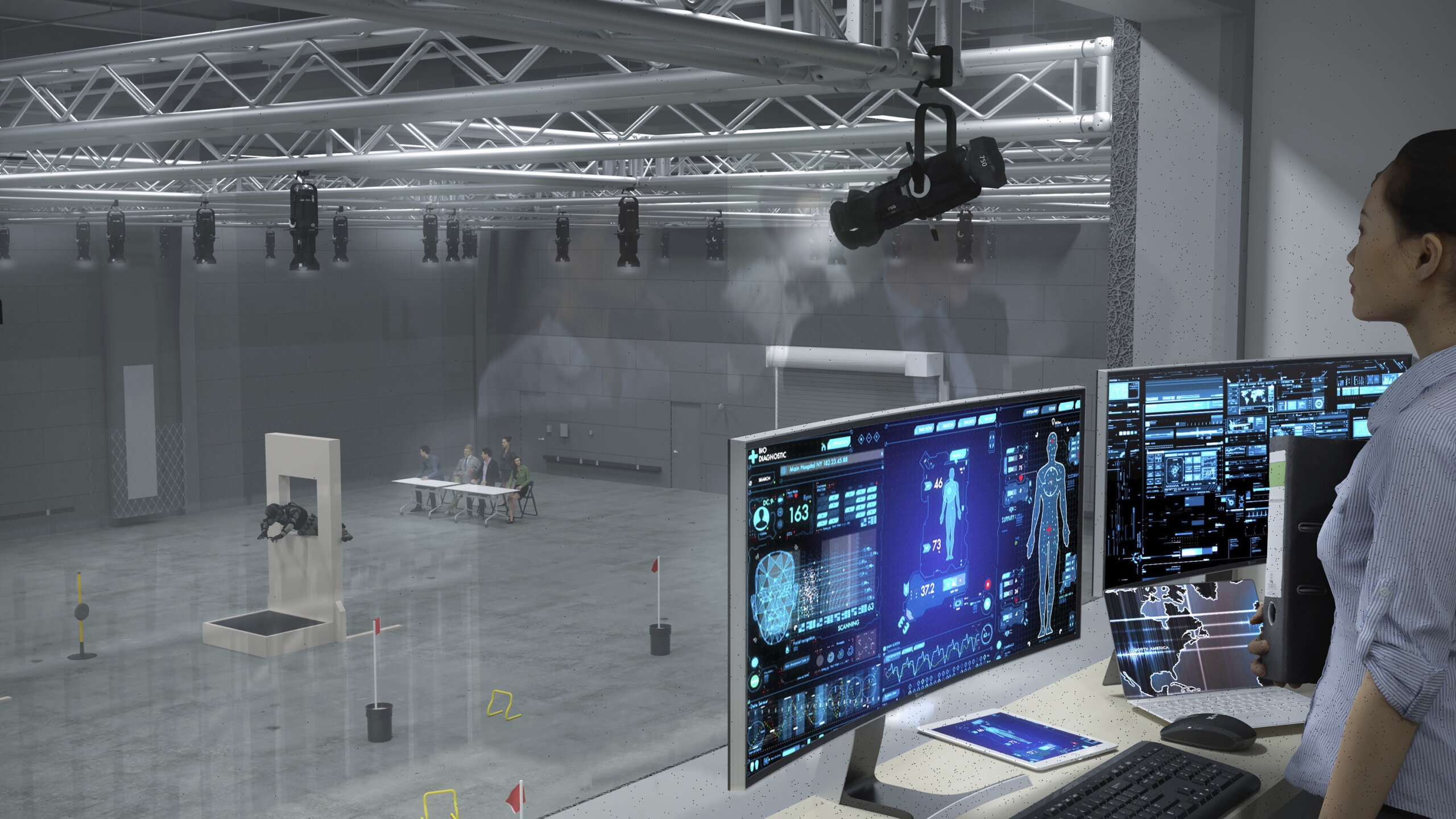
The labs see soldiers put through a range of informative tests.
Lab types include a large high-bay lab for large-format testing squad and soldier performance, biomechanics labs, and various virtual reality systems. Having each type of lab within one facility enables the team to perform multidisciplinary research with agility and efficiency.
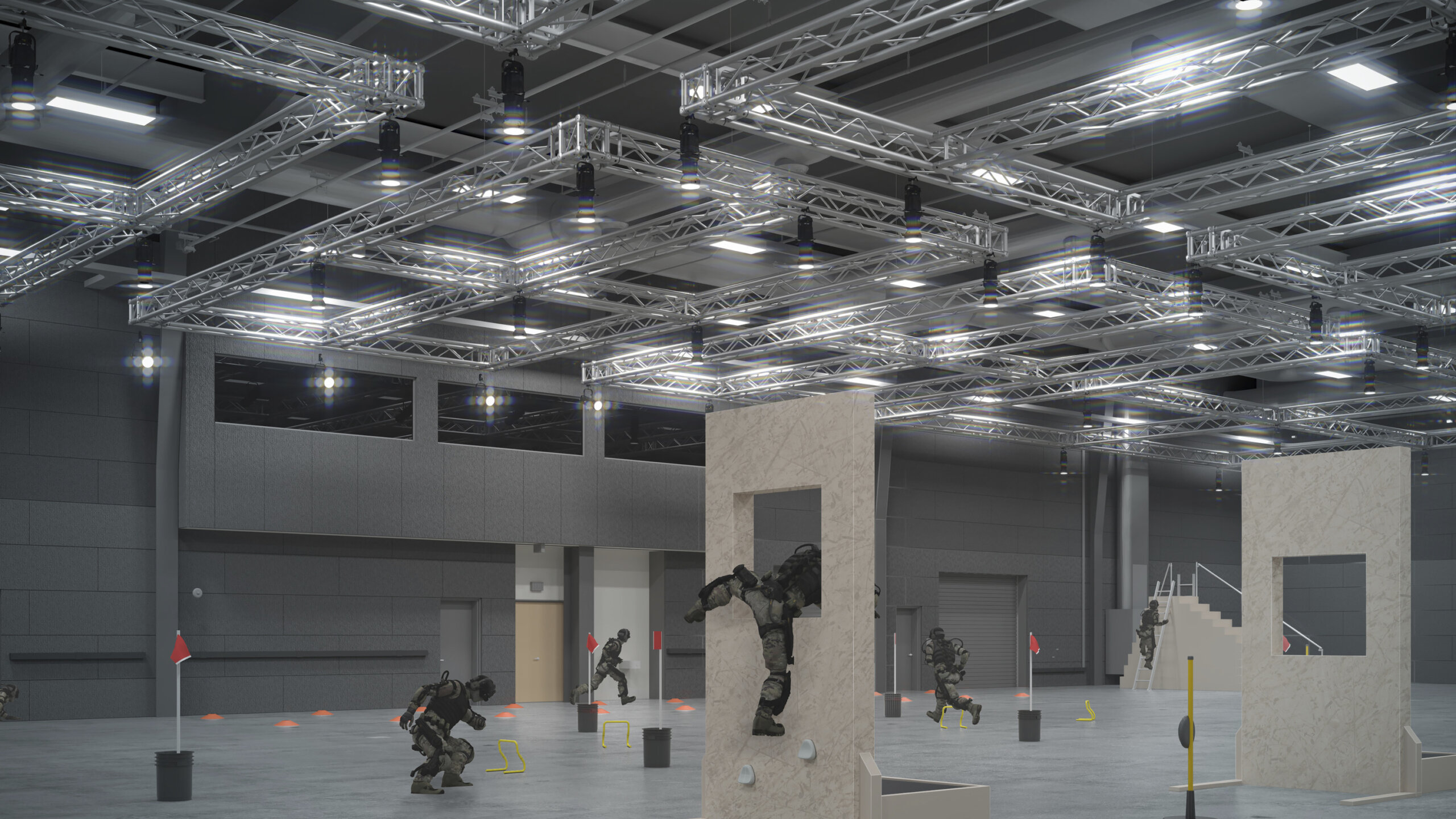
Researchers use these spaces to test internal and external factors that affect soldiers—gear, cognitive health, physical nutrition, sleep, and experiences out in the field. This information is used to quickly prototype and test new gear and other amenities. The tests enhance squad dynamics and communication by identifying the attributes of high-performing squads and modifying training to increase unit efficiency.
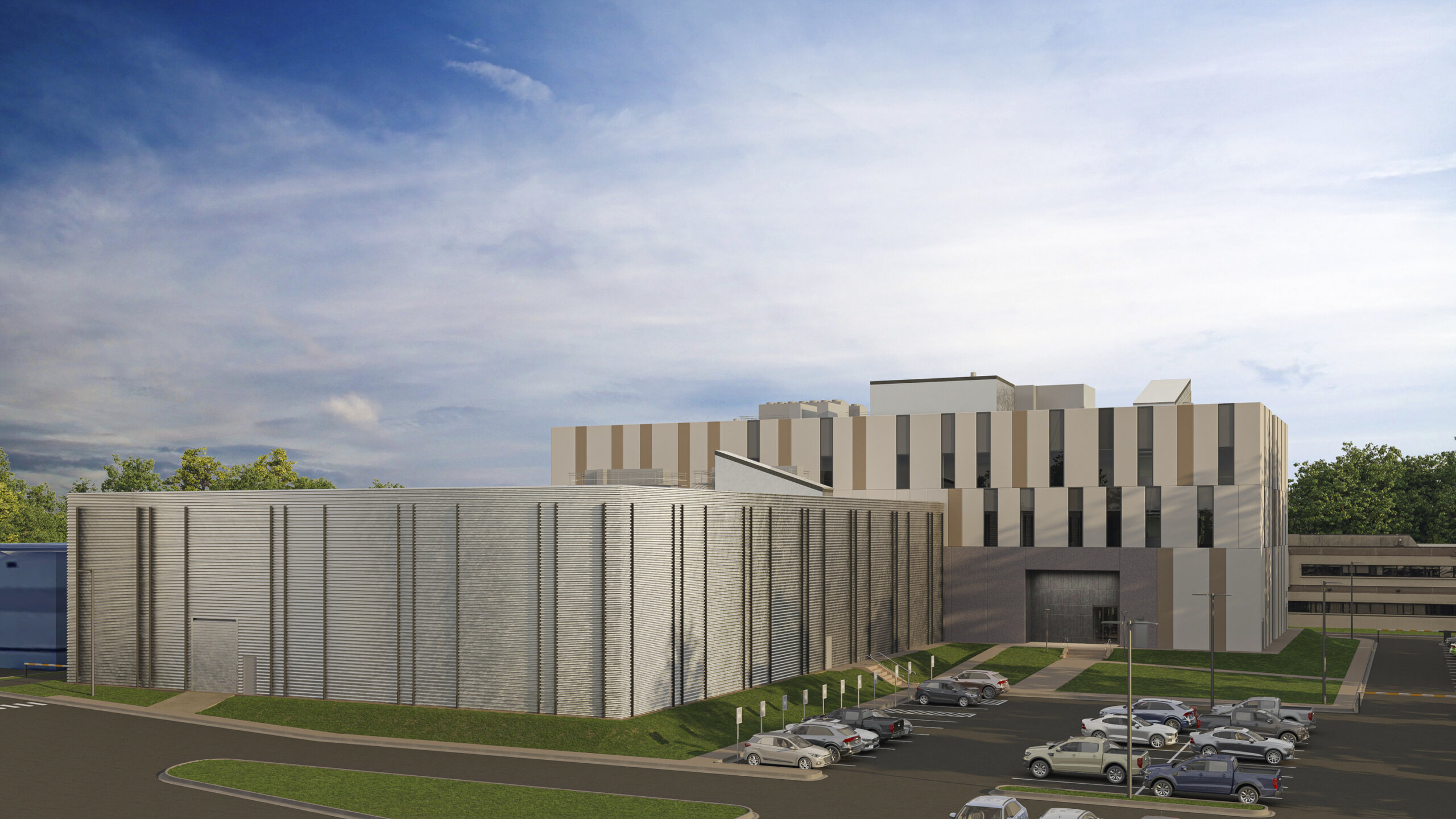
The building’s geometry reflects its unique constraints and adjacencies.
It is formed of a three-story lab and office building connected to a one-story fieldhouse, complete with ancillary support spaces. The building is organized around a series of large high-bay laboratories on the first floor.
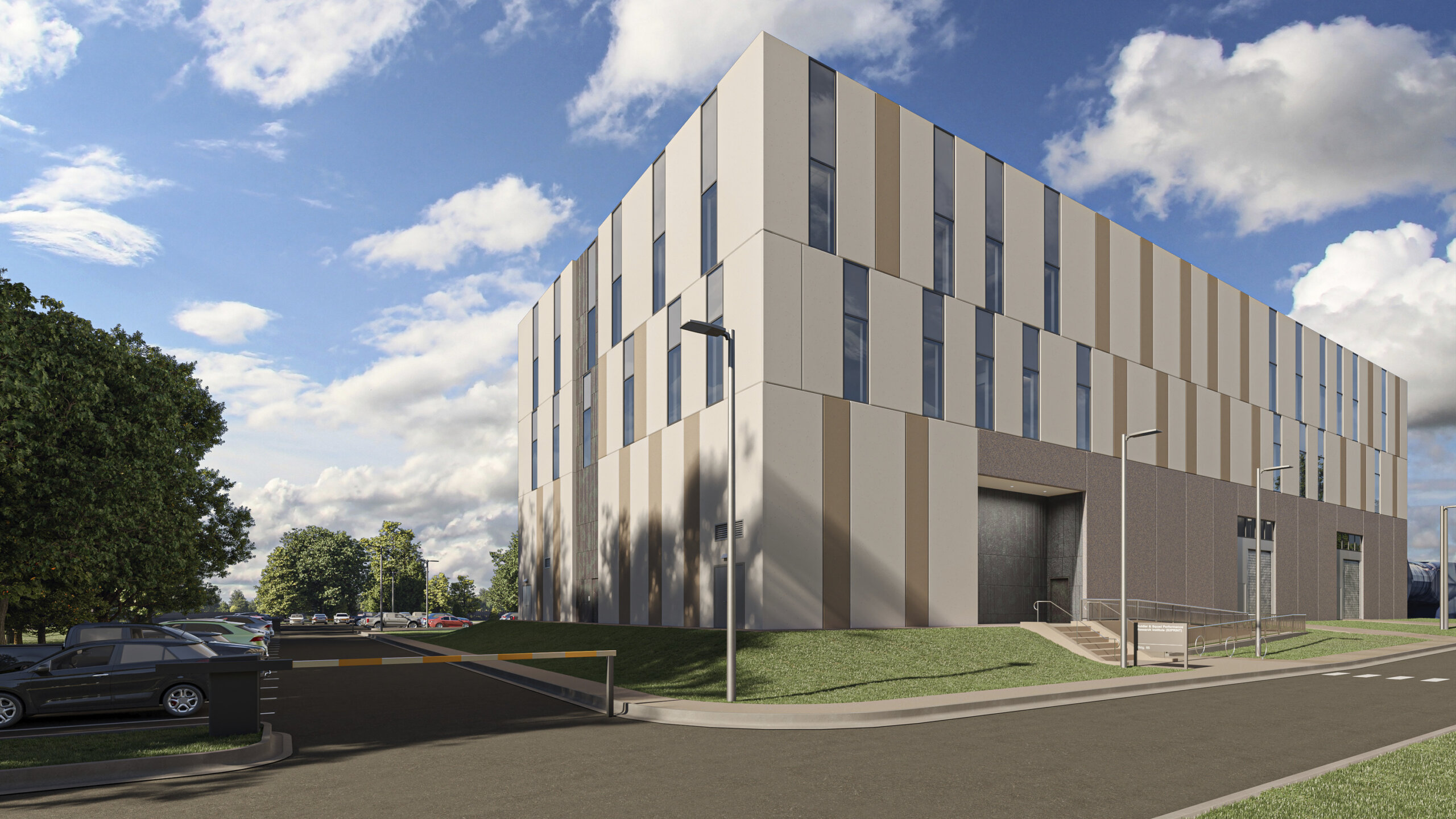
Tight space constraints and location within a historic district informed the building’s look. The design team made use of texture and pattern when designing the façade with tan and white architectural pre-cast concrete panels laid out in a checkerboard pattern. Subtle changes in texture mean that no side is identical.
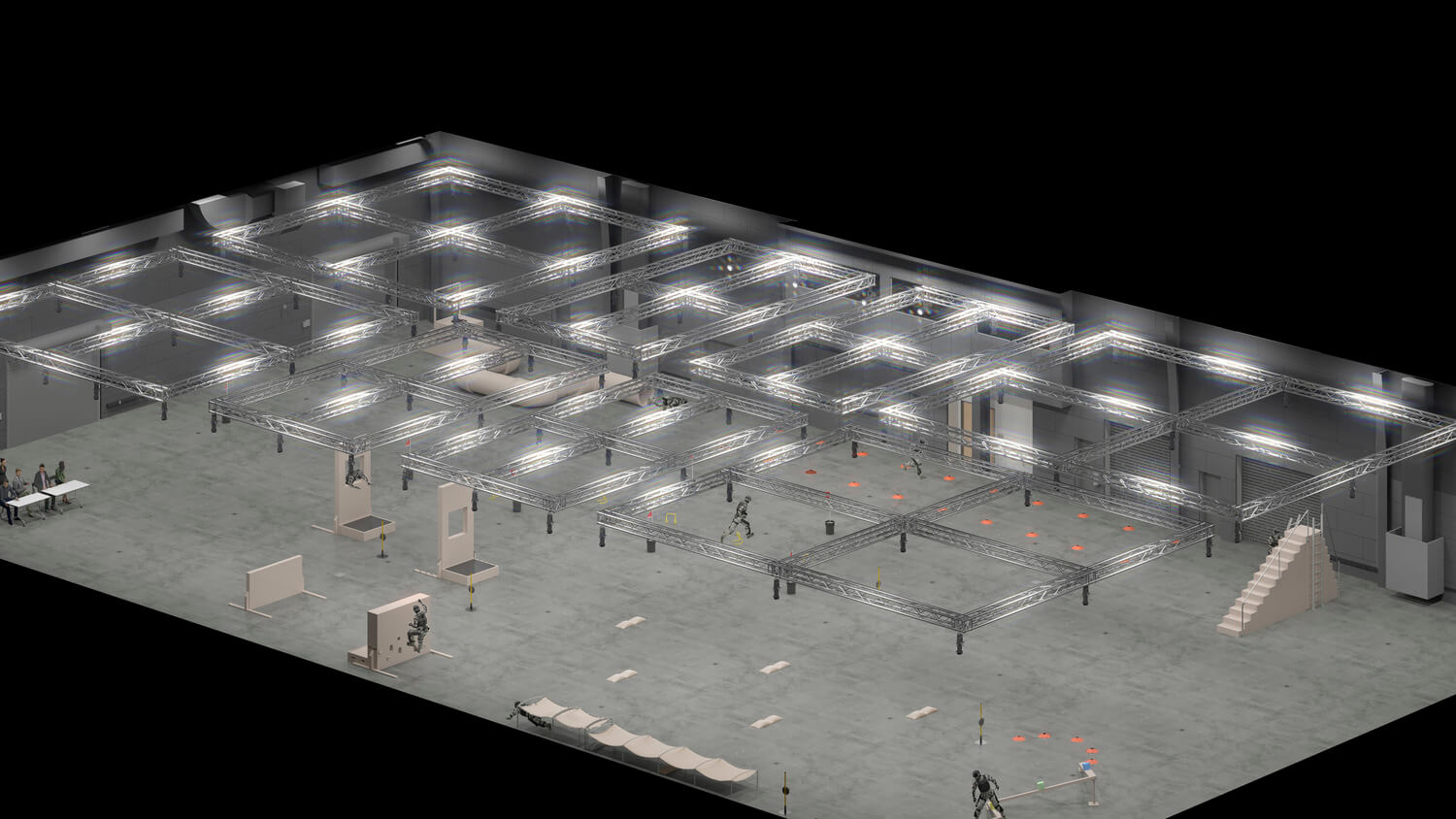
The Combat Maneuver lab simulates different climates and battlefield experiences.
SMMA’s electrical engineers created an adjustable lighting system to reflect different times of day within different spaces.
Next-Level Climate Control
|The electrical system uses tunable white lighting, which mimics the full range of pure daylight to moonlight, via color temperature-tuning and lighting-intensity dimming.

The system pairs with vast amounts of AV and IT integration to create a black-box theatre-type space. The theatre can replicate a wide spectrum of environments while gathering accurate dynamic data that is vital to the building’s mission.
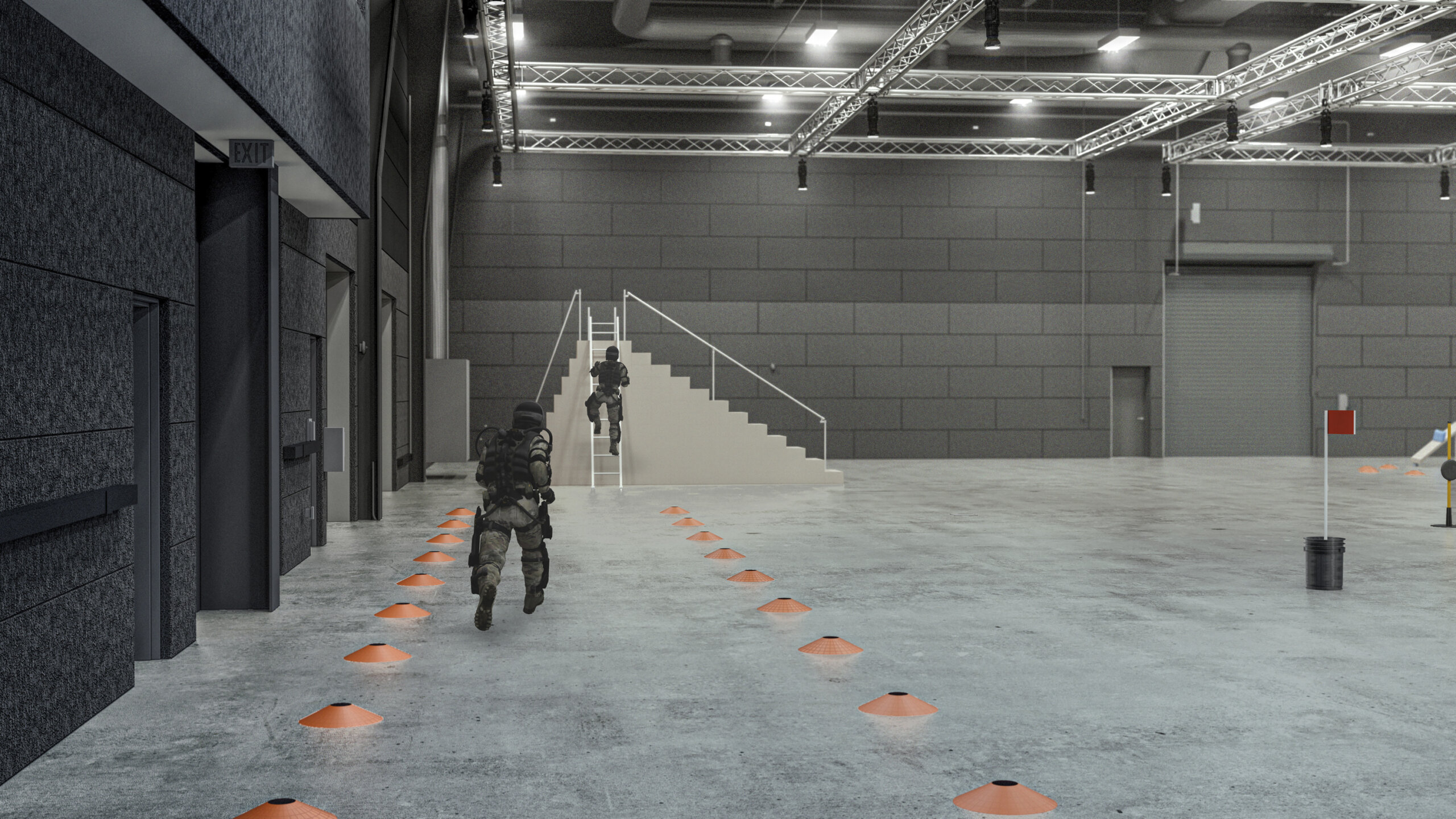
The HVAC system simulates temperature and humidity levels.
Most of the labs function like a large-scale gym and obstacle course. The design allows for flexible individual space temperature controls for different activities in different parts of the building. The mechanical design adjusts to demand: one room might be empty, while another might have entire squads being tested at a high level of activity.
The design limits noise pollution from one lab to the next.
Noisy spaces such as the digital shooting range required acoustic separation within its surroundings. The design achieved this through clever space planning, sound attenuation in the mechanical systems, and vibration isolation for the mechanical equipment.
Vibration-sensitive equipment helps to tolerate soldiers’ running and jumping. Isolated floor pads on the first floor and locally reinforced structure on the upper levels help to dampen any ambient vibration.
